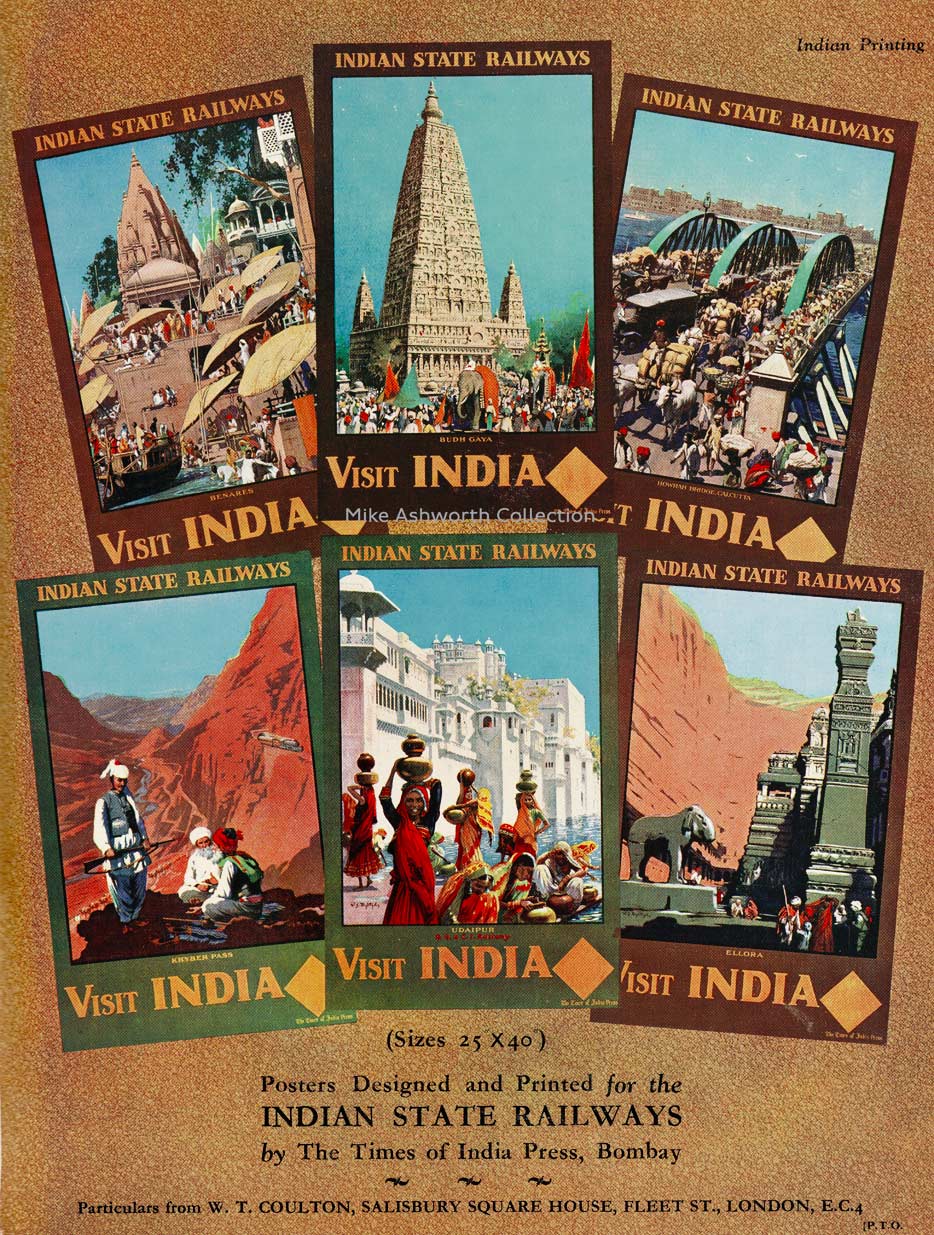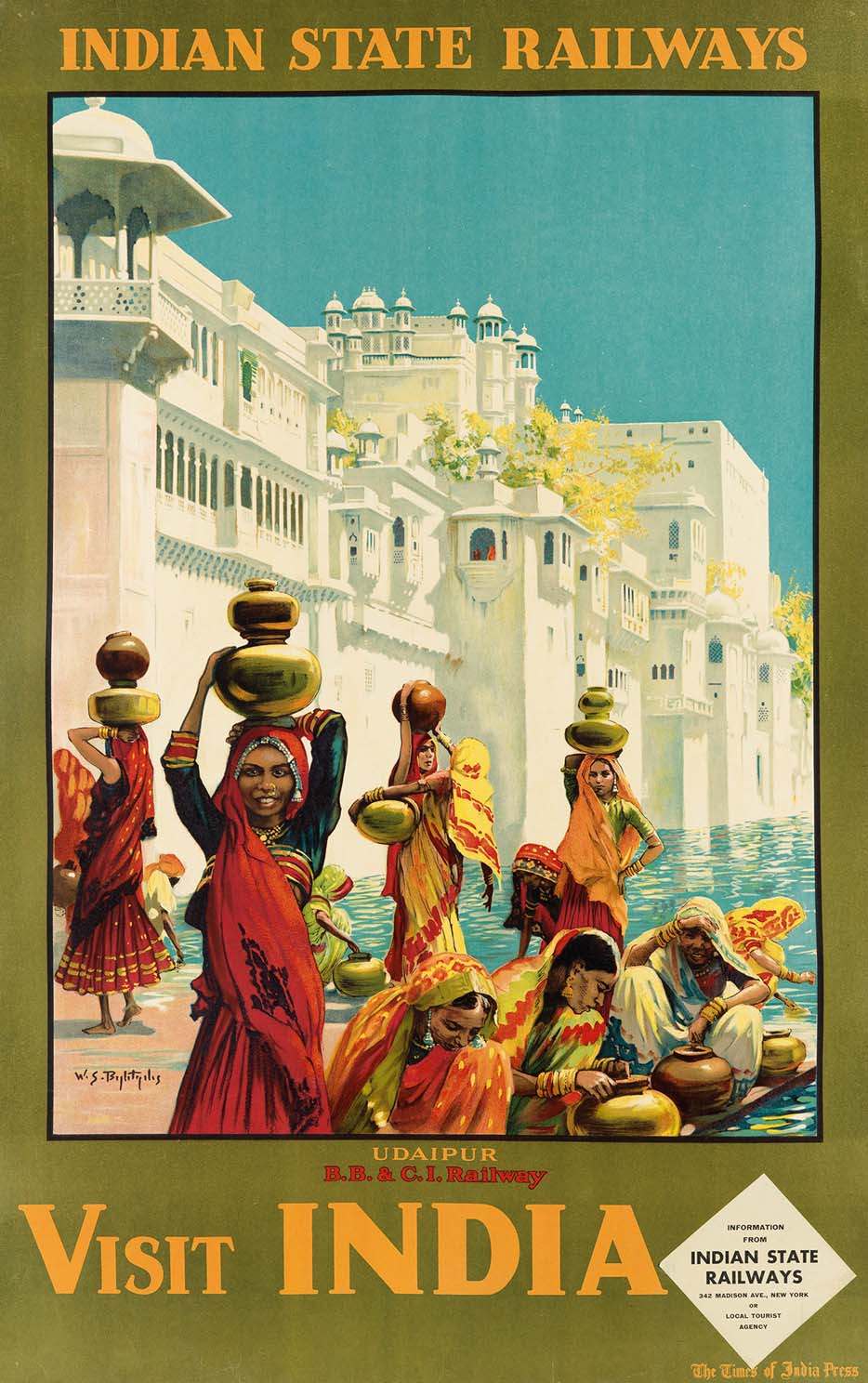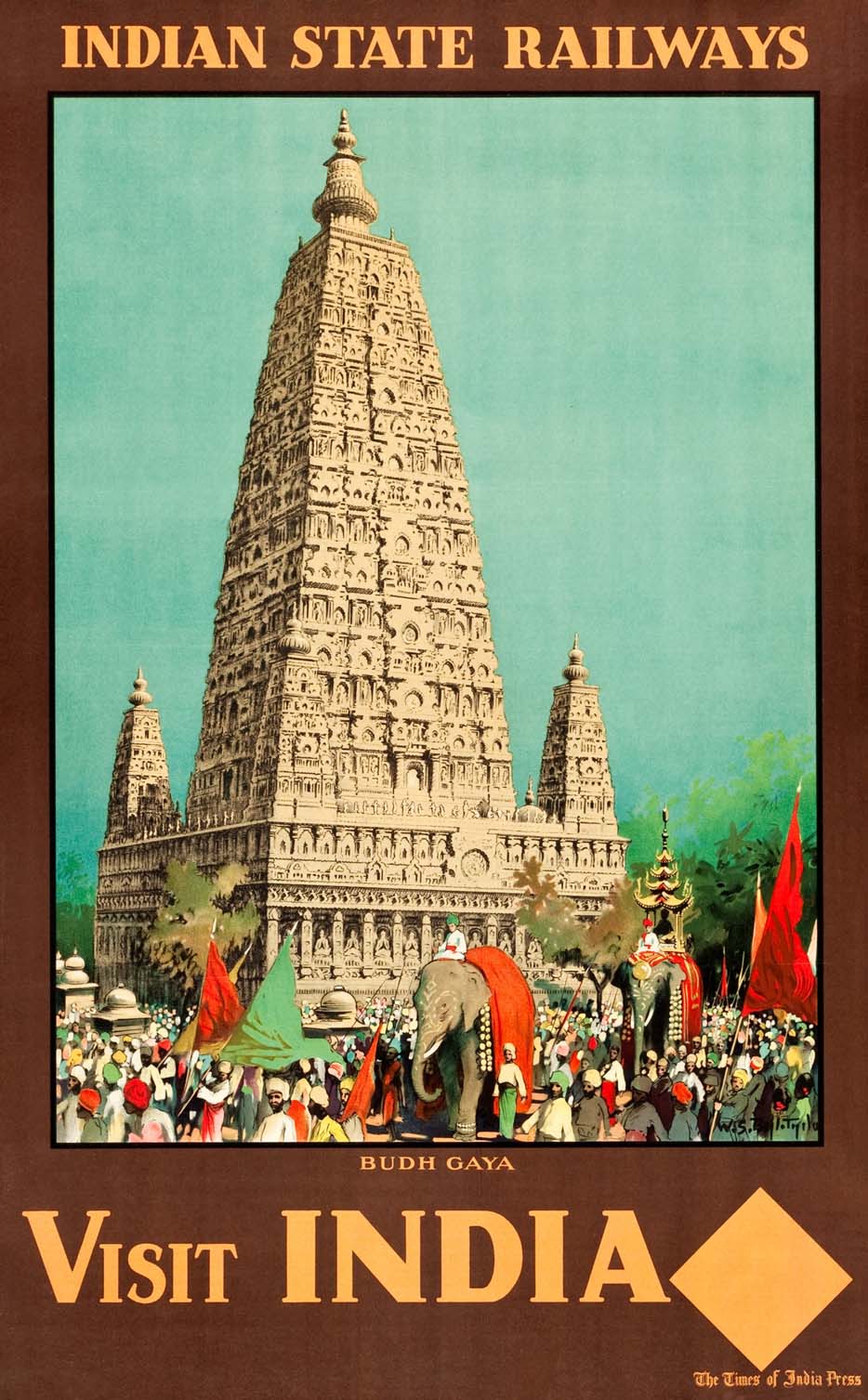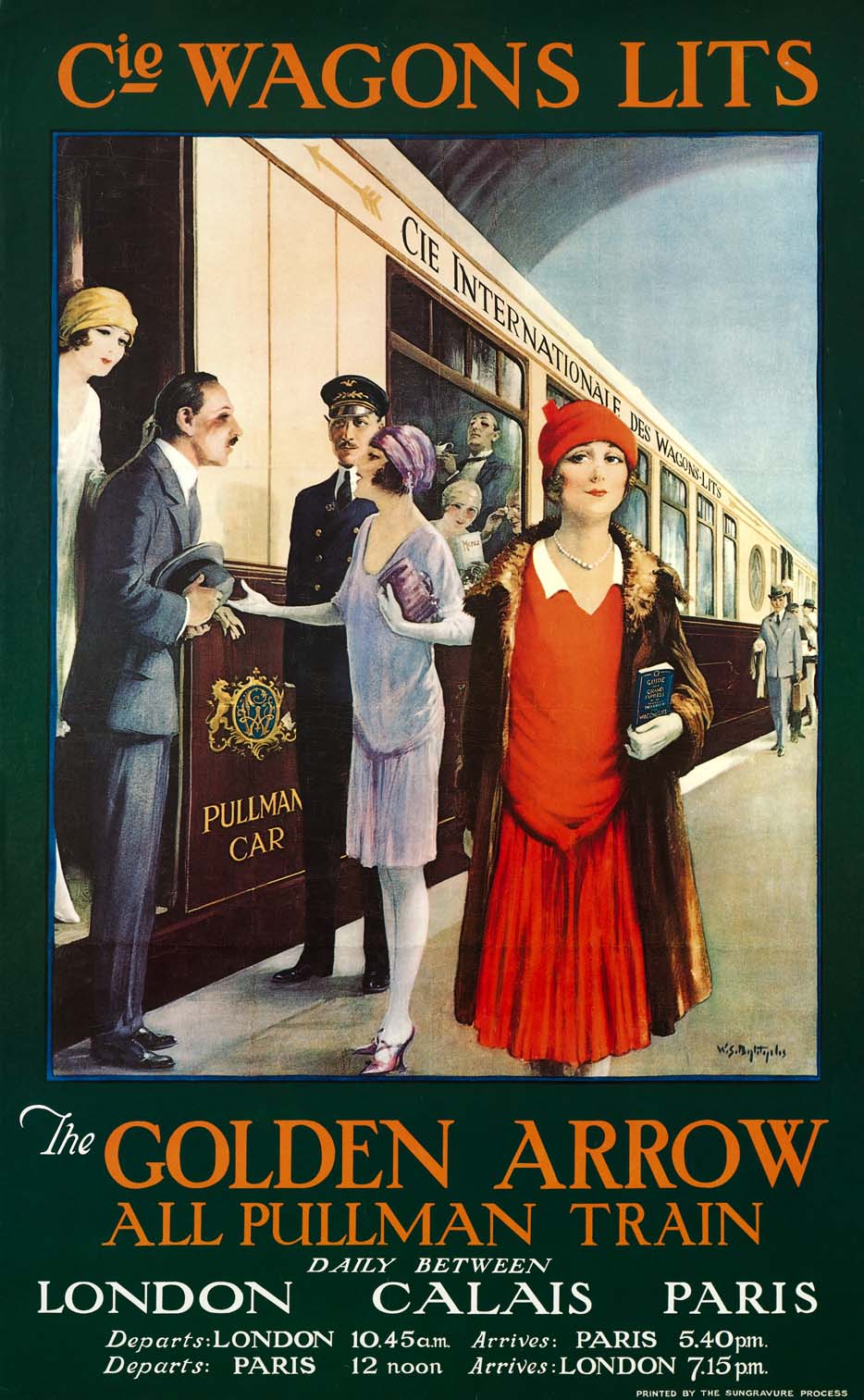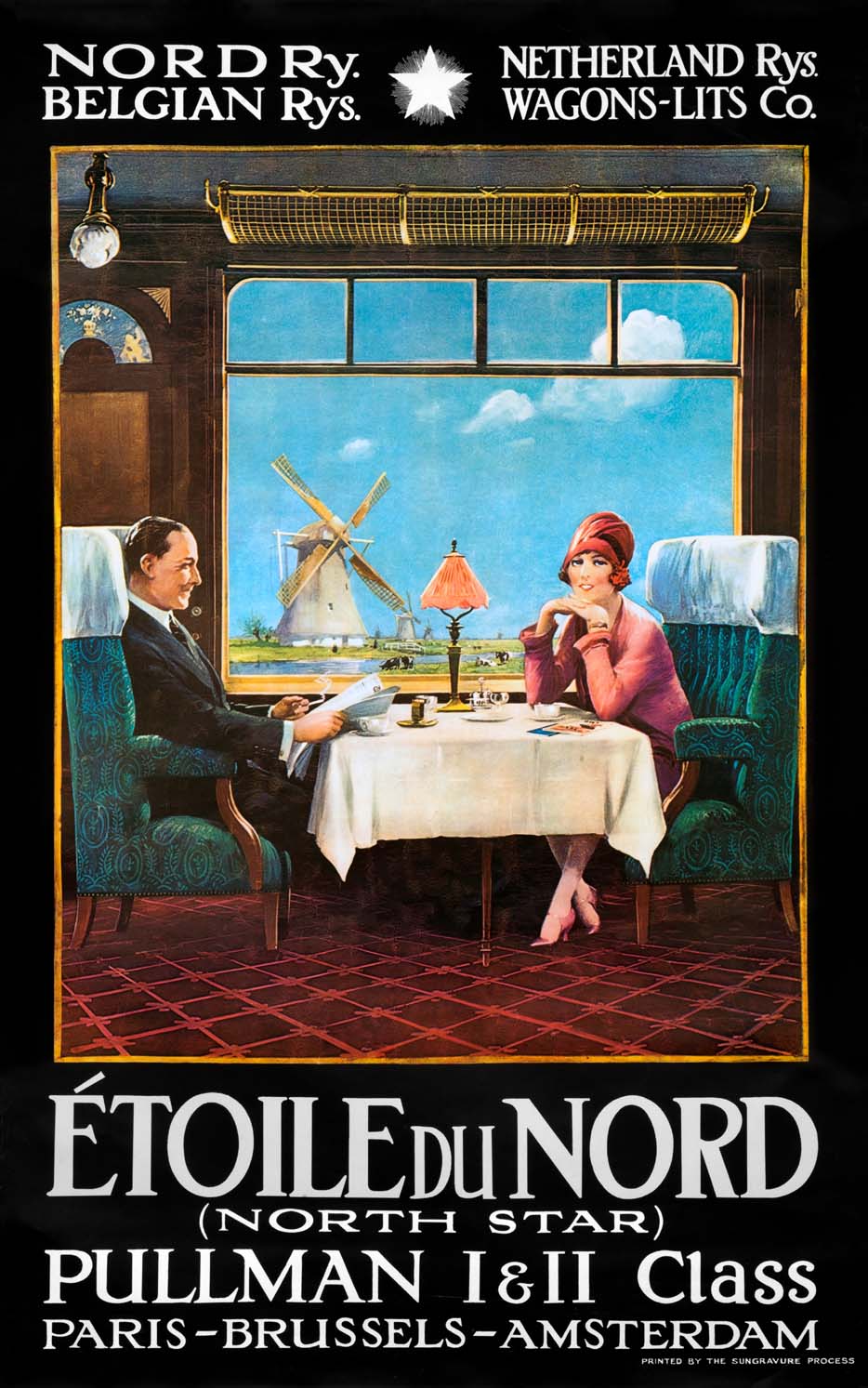Taj Mahal and windmills
Railway posters by William Spencer Bagdatopoulos
 Nederlandse versie
Nederlandse versie
The artist William Spencer Bagdatopoulos (1888-1965) was of Greek-British descent, but he spent his youth and education in the Netherlands. After a long journey through the Middle East, he became specialized in orientalism, the romanticized representation of the
Bagdatopoulos, whose signature reads 'Bylityilis', was also an advertising artist and the two sides came together in a series of posters for the Indian State Railways. Most famous became his posters for luxury Pullman trains, in which he presented the wealthy clientele in a fashionable way.
Youth and education
William Spencer Bagdatopoulos was born in 1888 on the Greek island of Zakynthos (Zante). His parents were Anastasius John Bagdatopoulos (1851-1903), a Greek grain inspector, and the British Amy Frederica Sheath (1860-?). William spent his youth in London and from 1897 onwards in the Dutch port of Rotterdam. In 1903 his father died. 'The widow, an Englishwoman, pulled through and the young Spencer attended the Academy of Visual Arts here, where he developed his talent for drawing and painting,' wrote newspaper Het Vaderland (8 March 1931). William was admitted to the Rotterdam art academy at the age of 11, where he was the apple of the eye of painter Alexander van Maasdijk.
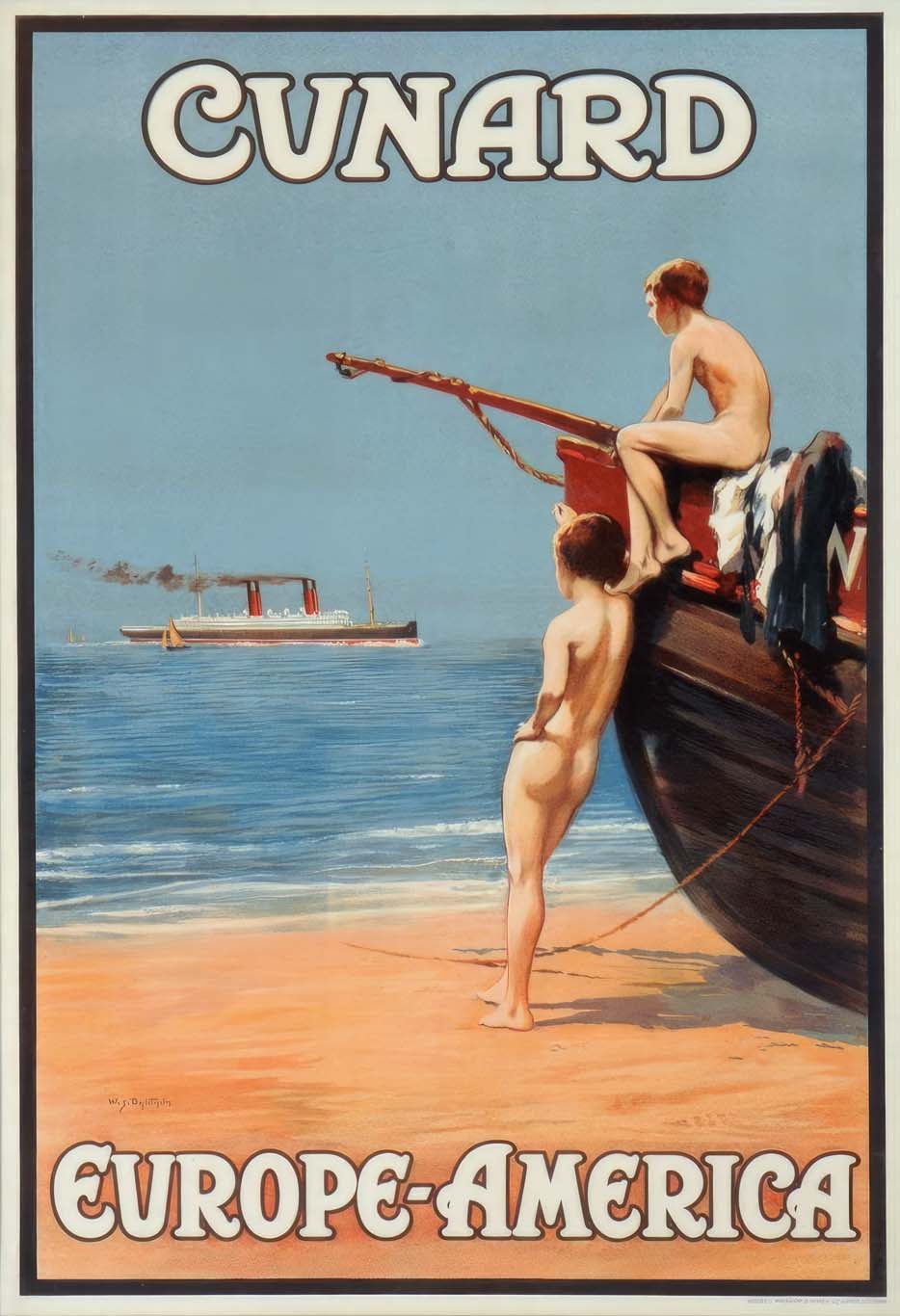
At the age of 16 William embarked on a long artist's journey across the Middle East, where he developed an orientalist drawing and painting style. 'He travels Palestine, Turkey, Greece, Egypt, but by no means as a luxury tourist', according to the newspaper mentioned before. 'He often felt short of breath; but his father's friends help him through it and every now and then he sells something.' In the words of an American newspaper: '… carrying his paint box with him and painting and selling as he went'. Subsequently he studied for a year at the Academy of Art in Athens. In 1908 he settled in London, where his mother and sisters had moved to. He was just over 20 years old when admitted to the Royal Society of Arts. William received commissions for portraits, illustrations, murals as well as posters, including one for the major shipping company Cunard Line.
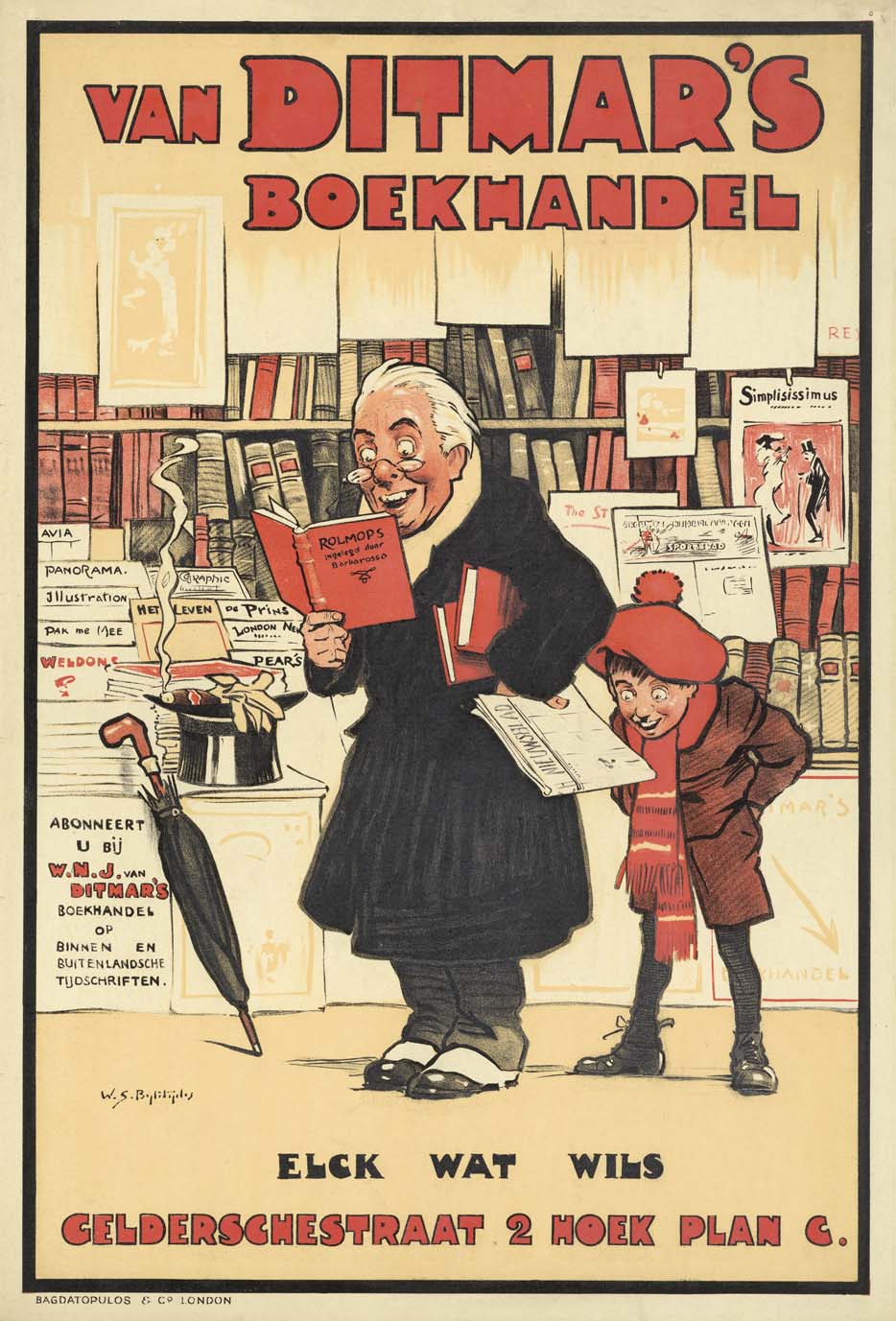
In Rotterdam the 'child prodigy' was not forgotten: Bagdatopoulos continued to get advertising assignments from local companies, such as Van Ditmar's bookstore and publishing house, which was also an advertising agency. An advertisement read: 'Mr W. Spencer Bagdatopulos, the well-known English illustrator and advertising artist, who recently won the competition for a poster by far (...), declared his willingness to illustrate the advertisements that our agency publishes in the newspapers.' And the daily Rotterdams Nieuwsblad (31 Oct 1912) wrote about the Great London Advertising Exhibition, where Bagdatopoulos had both British and Dutch commissions: 'In the Dutch pavilion he attracts attention by two large wall paintings, one depicting the rural Holland (wind mills) the other the trade and industry.'
Across India by train
From 1924 to 1926 Bagdatopoulos traveled through British India (India and Pakistan), where he could exercise his previously developed orientalist style. He was there on behalf of The Times of India Press of Bennett, Coleman & Co. in Bombay. This major newspaper publisher annually issued The Times of India Annual, richly illustrated in colour. Many of Bagdatopoulos' romanticized impressions of all parts of India were printed in this annual, even in later years. Additionally, the Times had a printing house that produced advertising posters, among other things. Bagdatopoulos was also deployed there as 'Chief artist and pictorial advisor', as his job title was. The prints were 'produced and printed by Indian labor with European supervision', according to the colonial attitude of the time.
Through The Times of India Press, Bagdatopoulos created a series of six travel posters for The Indian Railways Publicity Bureau. All posters had the same caption 'Visit India' and the subheading 'Indian State Railways'. Yet there was no railway company with that name (yet). Multiple rail companies existed, which were often founded privately and later taken over by the states or the central government.
One example is the Bombay, Baroda & Central India Railway (BB & CI Railway), which was purchased by the Government of India in 1905, but continued to exist under its own name and (London) management. Only in publicity, mainly aimed at British and Americans, did the Indian railways appear as one.
In addition to the Indian State Railways, the name BB & CI Railway is mentioned in small red letters on only one of the six posters: the one featuring Udaipur, nicknamed the Venice of Rajasthan. Although the designs were meant as railway posters, Bagdatopoulos did not portray trains but points of interest, such as the Howrah Bridge in Calcutta, which was still a pontoon bridge at the time. The posters not only show buildings, but also a lot of people with colorful clothing and attributes.
One of the posters shows the cave temples of Ellora in Maharashtra State, accessible from Aurangabad station of the Nizam's Guaranteed State Railway (NGSR). Another important rail link, the Grand Chord, connected to Bodh Gaya. There, Bagdatopoulos captured the Mahabodhi Temple, founded on the location where Siddhartha Gautama Buddha attained enlightenment. This image, which also features two elephants, would later be reused on posters for Air India and American President Lines.
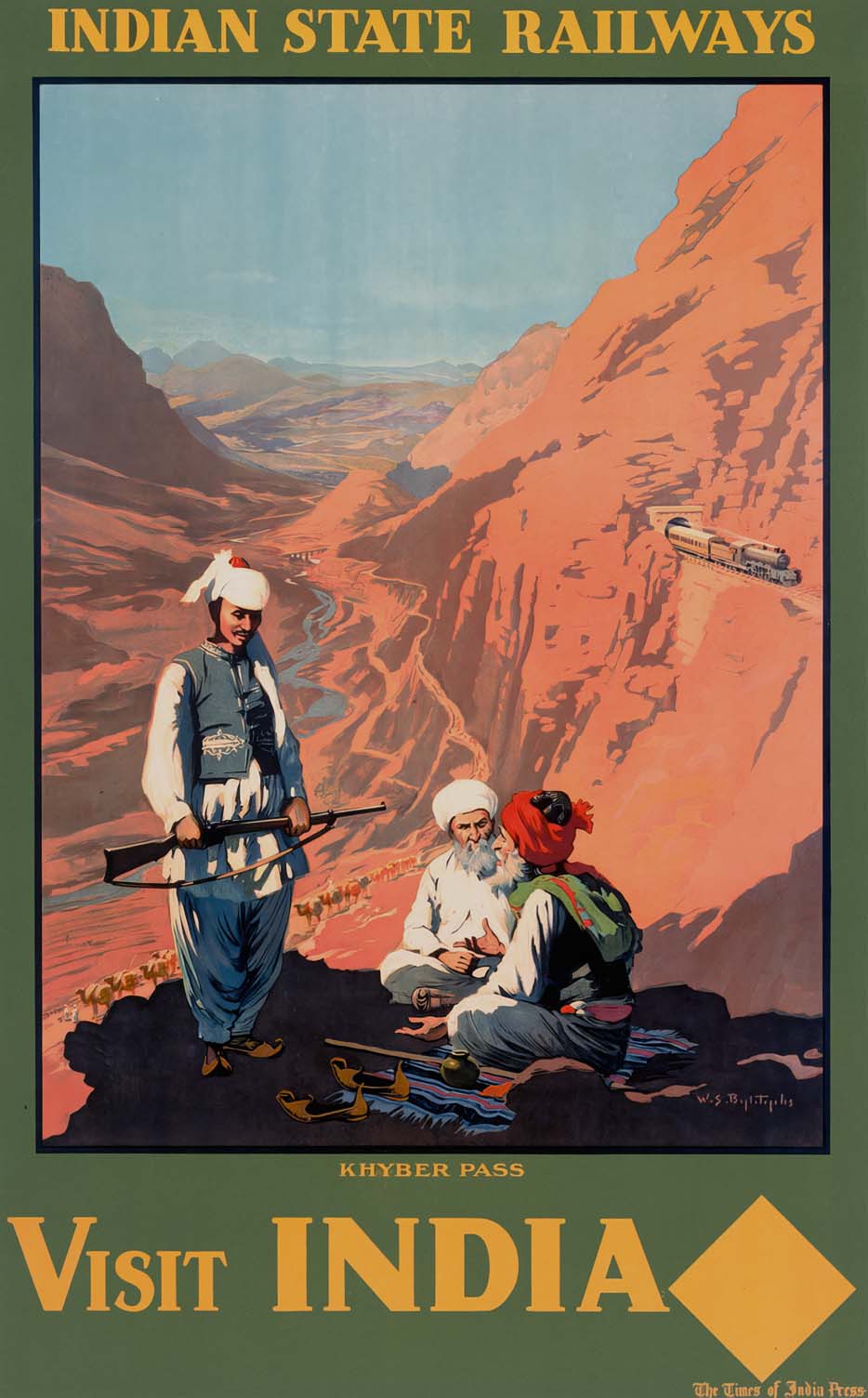
The only poster on which Bagdatopoulos depicted a train is the one with the Khyber Pass, a mountain pass that connects present-day Pakistan with Afghanistan. In the center are three Pashtun men - one with a rifle - sitting on a rock while the pass road is below them. On the red cliff, a steam train emerges from a tunnel of the Khyber Pass Railway. It was built for strategic reasons after the First World War and was completed in 1925, just when Bagdatopoulos was there. In the valley below the poster shows a camel train, which is both a wordplay and - together with the steamtrain - a representation of the old and new means of transport.
Pullman Trains
In 1927 Bagdatopoulos returned to England, where he started designing posters for the Sun Engraving Company, a major printer of (fashion) magazines in full colour. The Watford company briefly entered the advertising poster market with their 'Sungravure Process', a full-colour photogravure printing technique on rotary presses, faster and cheaper than traditional lithography. Sun's main poster client was Wagons-Lits, the French operator of sleeping and dining cars and luxury trains. Due to the recent merger with the British Pullman Car Company, Wagons-Lits was activly targeting the British market.
The first poster advertised the luxury Golden Arrow (La Fleche d'Or) boat train from London to Paris. On the English section by the Southern Railways, the train ran with brown-cream British Pullman carriages. At Dover and Calais a direct connection was provided to the Southern Railways' ferry. On the French branch from Calais to Paris the train had navy-cream Pullman cars of the continental type. The carriages were luxuriously upholstered and decorated in Art Deco style. Bagdatopoulos depicted a British carriage with a conductor and stylishly dressed passengers. A woman in red dress and hat has the Wagons-Lits timetable under her arm, while behind the train window a couple is being served by a waiter.
Another Pullman train by Wagons-Lits was the Étoile du Nord (North Star) between Paris and Amsterdam, which started in 1927. This luxury train became famous through a iconic poster by the French designer Cassandre, feateuring an almost abstract composition of shimmering rails with the Northern Star above. In the same year, another poster for the Étoile du Nord appeared for the British market, designed in a more traditional style. While Cassandre was a master in representing speed and modernity, the other poster reflected the elegant atmosphere aboard.
We see a fashionable couple in luxurious Pullman seats at a table with a characteristic pink lamp on top. The Dutch landscape with windmills served as a deliberately chosen background, because this was a special attraction for foreign travelers. The participating railway companies are listed above: in addition to Wagons-Lits these were the French Chemins de fer du Nord and the Belgian and Dutch railways. This poster does not carry a signature, but can be attributed to Bagdatopoulos without any doubt. Not only does it have the same drawing style, characters and lettering as the (signed) Golden Arrow poster, both were also 'printed by the Sungravure Process'.
United States
In 1928 William Spencer Bagdatopoulos left for the United States. He initially settled in Chicago and soon after in Santa Barbara, California. He worked as a portrait painter, advertising artist and designer of film and theater sets, 'always inventing and creating new novelness', according to Who's who in California (1928-29).
Later he devoted himself to printmaking, such as etchings, in which orientalist themes emerged again. After the Second World War, following the death of his American wife Caralisa Nichols, Bagdatopoulos returned to England. He joined his two youngest sisters in Cornwall, where he passed away in 1965.
